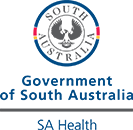Mouth diseases and conditions
Conditions and diseases of the mouth can impact how you eat, speak, socialise and express emotion. Having a healthy mouth is important for your overall health and may reduce your risk of chronic disease. Learn how to keep your mouth healthy and when you should see a doctor.

Bleeding gums and dental bleeding
Bleeding from your gums or mouth can be caused by gum disease, a dental procedure or an injury. Find how to prevent or treat dental bleeding.

Cleft lip and cleft palate
Cleft lip or palate happens when parts of the lip, upper jaw or roof of the mouth don't join properly early in pregnancy.

Cold sores
Cold sores are blister-like spots that appear in or around the mouth. Find out about prevention, common triggers, treatment and self-care options.

Dry mouth syndrome
Dry mouth syndrome is when you don't produce enough saliva. For some, it's annoying; others find it affects the health of their teeth and gums.

Dysphagia (difficulty swallowing)
Find out about the symptoms, causes and diagnosis of dysphagia (difficulty swallowing), when to see your doctor and how this problem can be treated.

Gingivitis
Gingivitis is an early form of gum disease. If untreated it can progress to periodontitis. Learn more about the signs and treatment of gingivitis.

Gum disease
Gum disease is when the tissue that surrounds and supports your teeth becomes infected. Find out about the symptoms and treatments for gum disease.

Halitosis
Halitosis (bad breath) is normal when you wake up, before cleaning your teeth. Sometimes halitosis can be a sign of another dental or medical problem.

Mouth and tongue cuts
Cuts to the mouth and tongue can happen after a fall or knock to the head. Most are minor and heal on their own, but some may need treatment.

Mouth cancer
Mouth cancer can affect your tongue, lips, cheeks or soft palate. Learn about risk factors, symptoms, treatment and importance of early diagnosis.

Mouth sores and ulcers
An ulcer is a common type of mouth sore. It can make everyday tasks like brushing your teeth, talking, eating and drinking feel uncomfortable.

Oral thrush
Oral thrush (oral candidiasis) is an infection of the mouth caused by a yeast fungus. Learn about symptoms, treatment and how to prevent infection.

Tongue-tie division (infant)
A tongue-tie joins the tongue to the floor of the mouth. Dividing the tongue-tie should allow your baby to feed better and improve oral hygiene.









